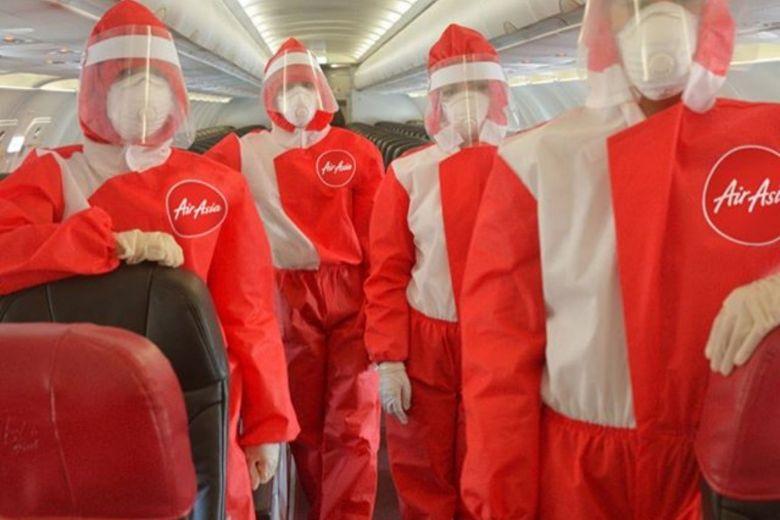
AirAsia is trialing a personal protective equipment (PPE) uniform for its cabin crew as the LCC group prepares for the resumption of flights in some markets.
The Malaysia-based airline’s Thai subsidiary will restart domestic operation from May 1 as COVID-19 travel restrictions are eased.
In preparation, AirAsia Thailand has implemented a series of regulations for its passengers, including the wearing of masks throughout the journey. Travelers will be limited to only a single item of hand luggage which can only be placed under the seat in front of them. The airline said this is to ensure social distancing when passengers get on and off the aircraft. An extra 7 kg (15 lbs.) of hold luggage can be checked in with no additional cost.
A limited number of seats will be available for each flight as passengers will be kept apart by alternate seats being left empty. Food and beverage services will also be suspended.
AirAsia said the new PPE uniform for cabin crew is undergoing further assessment and a review of the design is underway. The red and white suits were designed by Filipino fashion designer Puey Quinones and were first used on an AirAsia Philippines recovery flight from Bangkok to Manila.
The group’s plans for how it will resume flying come after the airline counted the cost of the coronavirus on its 2020 first quarter (Q1) operations.
For the first quarter of the year the group said its 80% load factor exceeded its own expectation of 77%. The LCC credited this to proactive capacity management, especially in Malaysia and Thailand. Both markets saw capacity—measured as average seat kilometers (ASK)—slashed by 24% and 30% year-on-year (YOY) respectively.
AirAsia Group Berhad’s consolidated AOCs—comprising AOCs in Indonesia, Malaysia and the Philippines—saw passenger carriage drop 21% YOY to 9.9 million. Total capacity fell 19%. Passenger demand only declined 27% YOY, likely because of the relatively late implementations of lockdown measures in these markets. In Malaysia, for example, travel restrictions were introduced relatively late in the quarter on March 18.
Community lockdown measures were not imposed until April in India and Japan and these were the only two markets that saw positive gains. AirAsia India saw its passenger carriage increase 30% to 2.5 million passengers. Capacity was up almost half—by 45% YOY—with the introduction of 10 A320s and RPK were also up 32% YOY.
Fleet size remained the same in Japan with three Airbus A320s, though capacity and demand both improved 30% and 15% YOY respectively, resulting in a 32% increase in passenger carriage.





